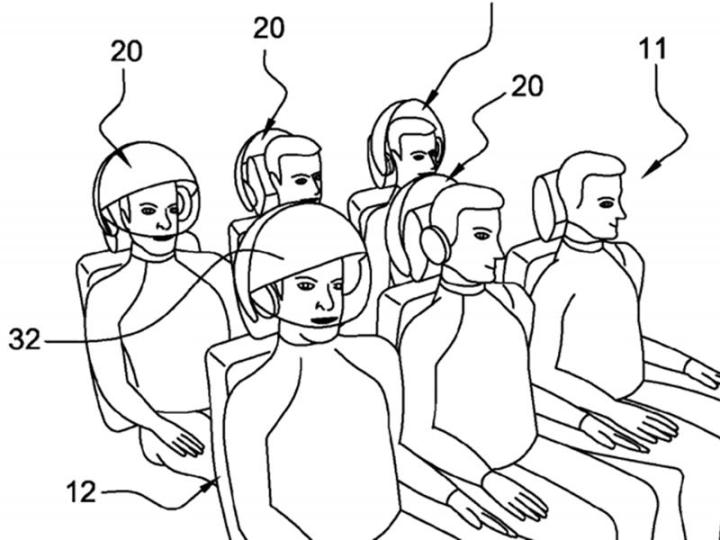
Having music, movies, television shows or soothing ambient experiences in your own private virtual world would no doubt go down well with flyers who currently have to stare at a small screen in front of them. The “sensorial isolation” promised by Airbus in its patent application would mean there would be no seatbelt signs in your peripheral vision and no engine noise competing with the dialogue in the latest Hollywood blockbuster.
The diagrams accompanying the patent show a helmet-style headset with a drop-down visor. Built-in earphones pipe audio through for a fully immersive experience. You could even use the virtual reality system to get some work done — one concept image shows users typing on a virtual keyboard displayed in the air in front of them. Audio and video inputs provide connections to your own smartphone and other gadgets.
There are no details on when this type of technology could appear in aeroplanes or how much it would cost, but Airbus obviously has plans to explore the technology in the near future. The patent application even mentions being able to generate smells, so you could lose yourself in a flowery meadow rather than stressing over the landing procedure.
Other details are less clear: Would travelers in first class get a higher-resolution display than those in economy? Would the safety training drill be carried out by digital avatars? From exploring the country you’re heading to before you get there, to playing some top quality games during the journey, in-flight virtual reality offers plenty of potential.


